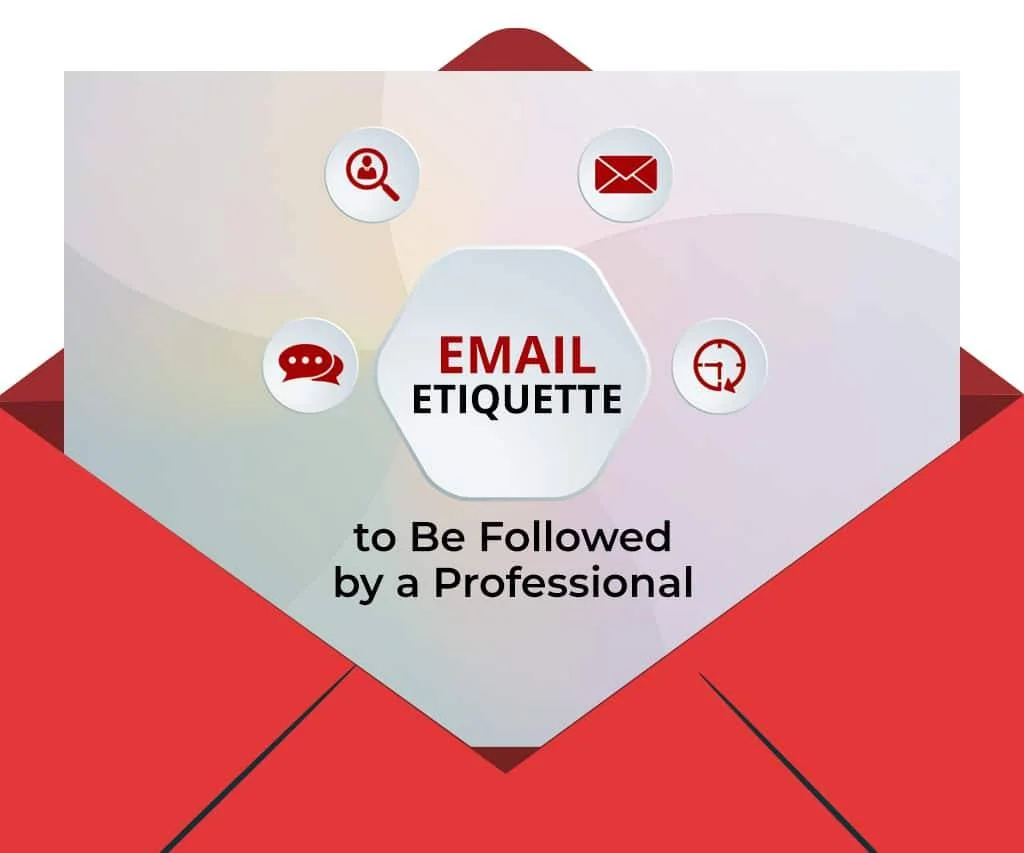Our professional lives include a large amount of email correspondence. We must follow basic email etiquette even as we work to read and respond to emails more quickly.
Employers and business contacts will think more favorably of you if you adhere to social conventions when interacting via email.
In this post, we define email etiquette and provide a list of the rules you must abide by when sending emails at work.
What is meant by Email Etiquette?
A set of social conventions that other people expect you to abide by when communicating by email is known as email etiquette. Different social norms may apply depending on the goal of your email and the recipient group you are writing to.
For instance, the tone you use when writing an email to friends and family may differ from the tone you use when writing an email to your employer, which may differ from the tone you use when writing an email to your subordinates.
Tips to be Followed for Professional Emails:
Here are some fundamental guidelines for proper email etiquette that every professional should be aware of:
- Write a Clear Subject Line
As so many of us are perpetually buried in our inboxes, the subject line of your email can greatly impact whether it is opened or not. Aim for a short, simple subject line that briefly and accurately sums up the content of your email.
Use identifiers that instantly and unambiguously indicate to the recipient what to expect from your email, such as “proposal” and “application.” Keep your subject lines useful because they are more likely to be read.
- Start with a Professional Greeting
Even if the recipient of your work-related emails happens to be a buddy, make sure to include a formal salutation. The phrase “Dear [name of the recipient]” or “Dear Mr./Ms. [last name of the recipient]” are appropriate additions.
Always give the recipient’s full name, even if you use a casual short moniker when speaking. While there are formal and informal ways to start an email professionally, you should never sound casual.
- Introduce Yourself
It’s a good idea to introduce oneself when writing to someone for the first time or when addressing someone who might not be familiar with you. To avoid sounding promotional, keep the introduction concise.
Specify your full name, job title, and employer. Please describe how you learned about the recipients and how your email might benefit them.
- Add Your Signature
Your name, title, company name, and contact information are all included in the signature block. Links to your social media profiles are also acceptable.
You can configure your email to add your signature to all emails you send automatically. Add your signature block in a line or two below the email’s ending. Format it using the same font type, size, and style as the rest of the material.
- Keep it Short
Making the receiver go through the entire email to figure out what your message is even about is the worst thing you can do. Instead, you should be clear about the goal of your email by saying it right away.
Make your message quickly, avoid wordiness, and use well-written, concise sentences. Ideally, your email should only have one purpose, but if you must address multiple issues, think about breaking them up into bullet points. When you believe you are finished, please spend some time proofreading your message to ensure it is understandable and remove any extra words.
- Avoid Exclamations
You can’t shout that frequently at work, can you? Exclamation points should therefore be used with caution in business emails. One should only be used to show excitement, which never calls for anything more than an exclamation point.
Not to mention closing a phrase with several of them, using more than one in a single email can provide the wrong impression about your professionalism.
Corporate Readiness Program At Techmindz
Everyone may improve workplace communications by being aware of the most crucial business email etiquette guidelines. Enroll in Techmindz to learn more about corporate training if you need to understand these concepts in-depth.














0 Comments